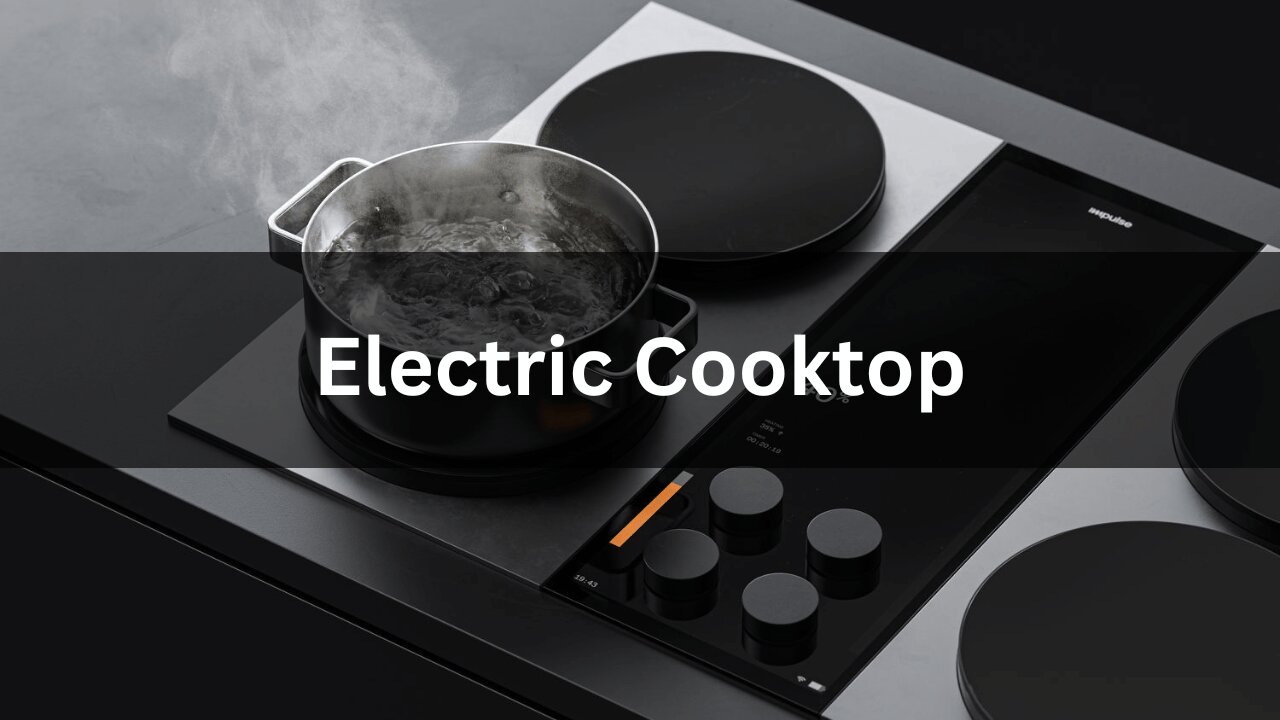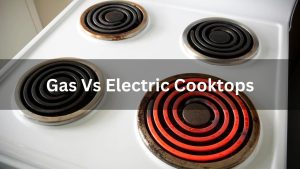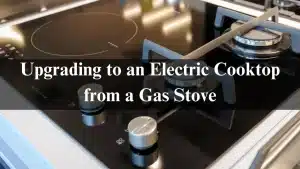Electric cooktops have become an increasingly popular choice for modern kitchens, offering a sleek and efficient alternative to traditional gas stoves. Their smooth surfaces, ease of cleaning, and innovative features make them a favorite among homeowners and cooking enthusiasts.
In this blog post, we’ll explore the different types of electric cooktops, their unique advantages and disadvantages, and provide tips on choosing and maintaining the best electric cooktop for your needs. Whether you’re considering a radiant or induction model, understanding how these appliances work and their key features will help you make an informed decision and elevate your cooking experience.
Table of Contents
History of electrical cooktop and who invented it?
The electric cooktop, though a staple in many kitchens today, has a surprisingly long journey from invention to widespread adoption. Here’s a breakdown of its history:
Early Inventions (Late 19th Century):
- The concept of electric cooking emerged in the late 1800s with the development of electricity.
- While the exact inventor is difficult to pinpoint, patents for early electric stoves were filed around this time. Some contenders include:
- William Hadaway (US) received a patent for an “Automatically Controlled Electric Oven” in 1897.
- David Curle Smith (Australia) is credited with patenting an electric cooking stove with a more familiar design (cooktop with oven below) in 1906.
Challenges and Slow Adoption (Early 20th Century):
- Early electric cooktops faced several limitations:
- High electricity costs: Electricity was expensive compared to traditional fuels like wood or coal.
- Limited power supply: Homes often lacked sufficient electrical capacity to handle the high power demands of electric cooktops.
- Poor temperature control: Early models struggled with maintaining consistent heat.
- Short lifespan: Heating elements weren’t as durable as they are today.
Advancements and Growing Popularity (Mid 20th Century):
- The invention of nichrome alloy for heating elements in the late 1800s improved their durability and efficiency.
- As electricity became more affordable and readily available in homes, electric cooktops slowly gained traction.
- By the 1920s, electric stoves were still considered a novelty, but they started to compete with gas counterparts due to their:
- Easier cleaning
- Faster heating
- Lower cost of operation
Modern Electric Cooktops (Late 20th Century – Present):
- Since the mid-20th century, electric cooktops have continued to evolve:
- Improved heating elements: More efficient and precise temperature control.
- Smoothtop surfaces: Easier to clean and maintain.
- Variety of cooktop types: Introduction of induction cooktops in the 1970s offered a new level of efficiency and safety.
Today, electric cooktops are a popular choice for their convenience, safety, and variety of features.
What are Electric Cooktops?
An electric cooktop is a flat panel on your countertop that provides a smooth, electric heating surface for cooking. Electric cooktops are popular in modern kitchens for their sleek look and easy cleaning. There are two main types of electric cooktops: radiant and induction.
- Radiant cooktops use electric coils or heating elements to generate heat, which is then transferred to the cookware. Radiant cooktops are similar to gas ranges because they take less time to heat up and cool down.

- Induction cooktops use magnetic fields to heat directly. Induction cooktops are very efficient and heat up quickly, but they only work with cookware made of magnetic materials, such as cast iron or stainless steel.
Moreover, its come in various sizes and configurations, with options to fit any kitchen layout. They also offer smooth two-touch controls, multiple heating zones, and timers.
Top 5 Types of electrical cooktop
There are 5 types of cooktops. Which are discussed below;
Electric Coil Cooktop
Electric coil cooktops feature exposed metal coils as heating elements, making them a cost-effective option. They are easy to repair by replacing individual coils but can be difficult to clean and often provide uneven heating compared to other types.
Electric Smoothtop Cooktop
Electric smoothtop cooktops have a sleek, flat surface made of glass-ceramic material with heating elements beneath. They offer even heating and are easy to clean, though they can be more expensive and susceptible to scratches and cracks, necessitating the use of compatible cookware.
Ceramic Cooktop
Ceramic cooktops are similar to smoothtop cooktops, featuring a glass-ceramic surface that hides the heating elements beneath. They provide a modern look and are easier to clean than coil cooktops, offering even heating. However, they are more prone to damage from scratches and cracks and can be more costly.
Modular Electric Cooktop
Modular electric cooktops allow for customization by combining different types of heating elements, such as electric, gas, and induction zones, in one unit. This flexibility caters to various cooking needs but comes at a higher cost and often requires more complex installation.
Portable Electric Cooktop
Portable electric cooktops are compact, standalone units suitable for small spaces or additional cooking zones. Available in both coil and smoothtop variants, including induction, they are convenient and typically inexpensive. However, they offer limited cooking space and power compared to built-in models and lack advanced features.
How Do Electric Cooktops Work?
There are two main types of electric cooktops, and they use different methods to heat your food;
- Radiant Electric Cooktops
- Induction Cooktops
1. Radiant Electric Cooktops
- These are the more traditional type and work like gas burners.
- They use heating elements below the cooktop’s surface, usually metal coils.
- When you turn on the burner, electricity flows through the coils, causing them to become red hot.
- This heat escapes to the outside, heating the cooktop’s surface (if it is not smooth glass), and then transfers the heat to your cookware through direct contact.
2. Induction Cooktops
- Induction cooktops use a more advanced method called induction heating.
- They have a coil under the smooth surface of the glass, but the coil is not directly heated.
- Instead, it produces a rapidly alternating magnetic field.
- When compatible cookware made of ferrous metal (such as cast iron or stainless steel) is placed on the cooktop, the magnetic field interacts with the pan, creating an electric current inside it.
- It generates heat directly in the cookware instead of heating the cooktop’s surface.
Here’s a quick comparison of the Radiant and Induction cooktops;
| 1 | Feature | Radiant Electric Cooktop | Induction Cooktop |
| 2 | Heating Method | Electrical radiate heat | The magnetic field induces a current in cookware |
| 3 | Heat Source | The cooktop surface gets hot | The cookware itself heats up |
| 4 | Energy Efficiency | Moderate( Some heat loss) | High ( heat goes directly to cookware) |
| 5 | Response Time | Slower to heat up and cool down | Heats up and cools down quickly |
| 6 | Compatible Cookware | Any type of cookware | Only magnetic Cookware |
Electric cooktops heat food with electricity. Radiant cooktops use heating coils like a small stove, while induction cooktops use magnetism to heat your pan directly.
Pro of Electric Cooktops
Here are some advantages of electric cooktops:
- Easy to clean: Especially the smooth-top models, have a smooth surface free of nicks and cracks, making them much easier to clean than gas cooktops.
- Safe to use: They do not have open flames, which can be a safety hazard for children and pets. They also eliminate the risk of gas leaks.
- More precise temperature control: Its offer more precise temperature control than gas ranges. It can be helpful for delicate cooking tasks, such as simmering sauces or melting chocolate.
- More relaxed kitchen: They don’t generate as much heat as gas ranges, which can help keep your kitchen cool in the summer.
- Multiple Heating Zones: Many electric cooktops have multiple heating zones, allowing you to cook multiple dishes simultaneously.
- Modern look: Electric cooktops can give your kitchen a sleek and contemporary look.
Overall, electric cooktops are an excellent option for many homeowners. They are easy to use, clean, and safe, and they offer several features that make cooking more accessible and enjoyable.
Cons of Electric Cooktops
Here are some disadvantages of electric cooktops to consider:
- Slower heating: Compared to gas, electric cooktops, especially radiant ones, can be slower to heat up and cool down. It means waiting a bit for the water to boil or taking some time to adjust the temperature.
- Less responsiveness: Electric cooktops, especially radiant ones, respond slower than gas when adjusting heat. It takes a moment to catch the burner.
- Not all cookware works: Induction cooktops only work with magnetic cookware, so you may need to invest in new pots and pans.
- Hot surfaces: Electric cooktops, mainly glazed ones, can stay hot after being switched off, posing a risk of burns if you’re not careful.
- High upfront cost: Induction cooktops are more expensive than gas ranges or radiant electric cooktops.
- Limited visual feedback: Unlike gas cooktops, which allow you to see the size of the flame, electric cooktops lack this visual cue to control the temperature.
Electric cooktops are more accessible and safer to clean, but they heat up more slowly than gas, and some require special pans. The surface can get hot, and induction models are more expensive. They are great for clean kitchens but could be better for those who like gas reactions.
How To Use An Electric Cooktop?
Using an electric cooktop is relatively straightforward. Here is a general guide:
Before Starting
- Consult your manual: Each cooktop may have slight variations, so it’s always best to consult the user manual for instructions specific to your model.
- Cookware: Make sure you’re using flat pans or pots made of materials that conduct heat well, such as cast iron, stainless steel, or some type of copper. Non-stick pans are also great for electric cooktops.
Using the cooktop:
- Turn it on: Locate the control panel, which usually consists of knobs or touch-sensitive buttons for each burner. Depending on the model, you may need to press the knob first before turning it.
- Choose a burner: Choose a burner that fits the size of your pan. Some cooktops have burners with expandable heating elements to accommodate different pan sizes.
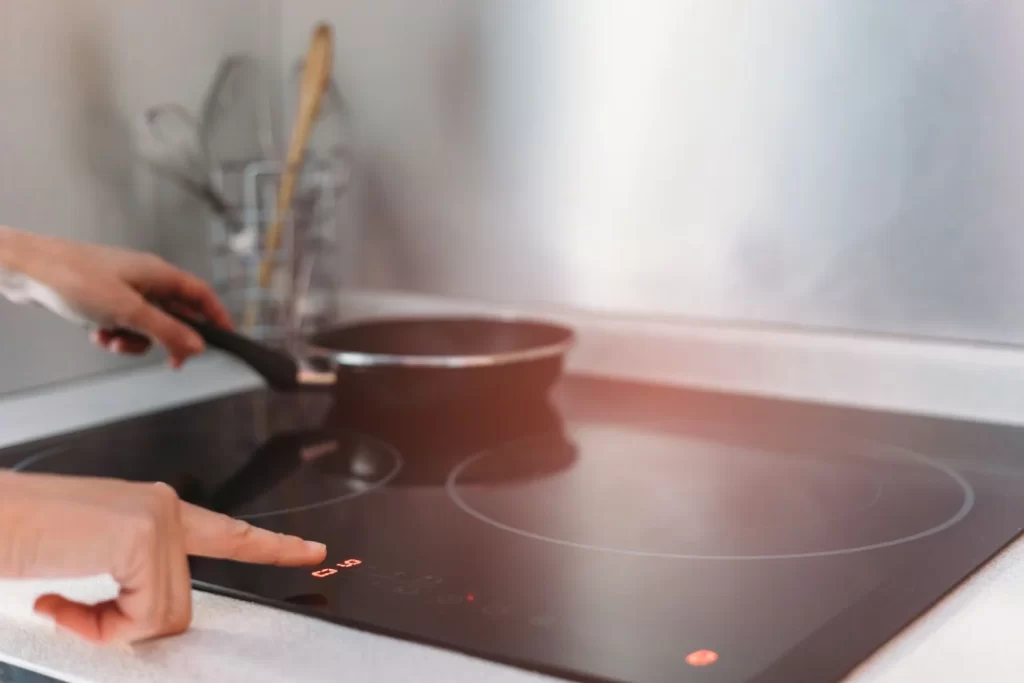
- Adjust the heat: Turn the knob or press the button to set your desired heat level. Electric cooktops usually have numbered settings (e.g., 1-10) or descriptive settings (e.g., simmer, low, medium, high).
Features of electric cooktops
Electric cooktops offer a variety of features that can make cooking more accessible and efficient. Here are some of the most common:
- Smooth surface: Electric cooktops usually have a smooth glass or ceramic surface that is easy to clean.
- Precise temperature control: Electric cooktops allow you to set the temperature precisely, which is essential for delicate tasks like boiling or melting chocolate.
- Multiple Burner Sizes: Most electric cooktops have different burner sizes to accommodate different cookware.
- Fast heating: Electric cooktops can heat up quickly, so you can start cooking immediately.
- Safety features: Electric cooktops often have child locks and automatic shut-off features, which can help prevent accidents.
- Bridging elements: Some electric cooktops have bridging elements that can be combined to create a larger cooking surface.
- Power Boil Elements: Power Boil elements are designed to boil water quickly. It is ideal for tasks such as boiling pasta or steaming vegetables.
- Glide Touch Controls: Glide Touch Controls are a new feature on some electric cooktops. They are easy to use and clean, giving the cooktop a sleek, modern look.
- Digital Touch Controls: Digital touch controls are another popular option. They are easy to read and use and allow precise temperature control.
What is an electrical stove?
An electric stove is a kitchen appliance that uses electricity to generate heat for cooking and baking. It consists of a cooktop, which may feature exposed coil elements or a smooth glass-ceramic surface with hidden elements, and an oven equipped with top and bottom heating elements. Some modern electric stoves also incorporate induction technology, which uses electromagnetic fields to heat cookware directly.
Electric stoves are appreciated for their ease of use, precise temperature control, and safety, as they lack an open flame. They are also easier to clean, especially the smoothtop and induction models. However, they typically consume more electricity than gas stoves and can be slower to heat up. Induction models, while highly efficient and precise, can be more expensive. Overall, electric stoves are a popular choice for their convenience, modern design, and consistent heating capabilities.
How We Selected the Best Electric Cooktops
No single source selects the “absolute best” electric cooktops because needs and preferences vary. However, reviewers and publications often follow a similar process to identify top-performing models. Here’s a breakdown of how they can choose the best electric cooktops:
- Key Quality Identification:
- Type of Cooktop: Electric cooktops come in two main types – radiant coil and induction. Reviewers will consider which type is best for their target audience (considering factors such as budget and cookware compatibility).
- Features: Key features such as size and number of burners, accuracy of temperature control, safety features, and unique elements (bridging, power boiler) are all evaluated.
- Performance: Heating speed, uniformity of cooking, and responsiveness to temperature adjustments are all tested.
- Ease of Use: The control panel design is intuitive, and the cleaning factor is straightforward.
- Durability and build quality: Materials used, length of warranty, and brand reputation are considered.
- Value: This combines factors like price, feature set, and overall performance to determine how much bang you get for your buck.
- Research and Shortlist:
Reviewers will research popular models from major appliance brands and some newer players.
User reviews and ratings are also viewed on retailer sites and Consumer Reports.
- Testing and Evaluation:
Manufacturers typically purchase or acquire shortlisted models for hands-on testing in a controlled kitchen environment.
Testers follow a defined evaluation process based on identified criteria, putting each cooktop through its paces.
- Comparison and Selection:
After testing, reviewers will compare all cooktops across various factors, assigning a score or rating.
Some reviewers may choose the “best” electric cooktop overall, while others may create categories such as “best for budget” or “best for professional use.”
- Final Recommendations:
Based on evaluation and scoring, the best electric cooktops are identified and written about in detail, highlighting their strengths and weaknesses.
It is important to note that there will always be some subjectivity in the selection process. Observers may prefer certain features over others based on their target audience. That’s why it’s helpful to read reviews from multiple sources to get a well-rounded picture before choosing.
Tips For Taking Care Of Your Electric Cooktops
Here are some quick tips to keep your electric cooktop shining and working for years to come:
- Clean up ASAP: Don’t let food harden on the surface. Wipe away dirt with a damp cloth after each use for easy cleaning.
- Skip the abrasives: Hard pads and abrasive cleaners are a no-no. Stick to soft sponges, soft cloths, and cooktop-specific cleaners.
- Lift, don’t slide: Sliding utensils can scratch the cooktop. Always lift your cookware when moving it around.
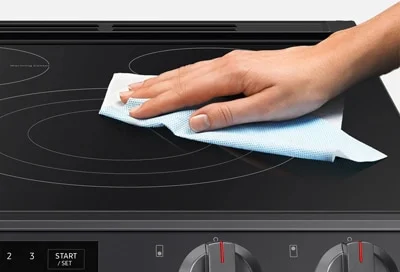
- Cool it down: Avoid directly placing hot pots or pans on a cold cooktop. Allow the surface to cool slightly first.
- Read the manual: Each cooktop may have specific cleaning recommendations. Consult your manual for best care practices for your model.
Moreover, Keep your electric cooktop happy! Clean up spills quickly, use a mild cleaner, and lift dishes to avoid scratches. Allow hot cookware to cool before handling, and consult your manual for specific care instructions.
Electrical Cooktops vs. Gas Cooktops
| Feature | Electrical Cooktop | Gas Cooktop |
| Heating Speed | Moderate | Fast |
| Energy Efficiency | Moderate (70-80% efficient) | Low (30-40% efficient) |
| Safety | High (no open flame) | Low (open flame risk) |
| Maintenance | Easy (smooth top) | Moderate (grates and burners |
| Cost | Moderate | Moderate to High |
Electrical Cooktops vs. Induction Cooktops
| Feature | Electrical Cooktop | Induction Cooktop |
| Heating Speed | Moderate | Very Fast |
| Energy Efficiency | Moderate (70-80% efficient) | High (90-95% efficient) |
| Safety | High | Very High (cool surface) |
| Cookware Compatibility | General | Specific (magnetic) |
| Cost | Moderate | High |
Related Articles:
Converting Electric Cooktop Into Modern Kitchen Design 2024
How to Choose the Right Size Electric Cooktop-Info 2024
Installation Of Electric Cooktop Latest Update 2024
Conclusion
Electric cooktops are a modern and efficient cooking solution for many kitchens, offering a sleek design and easy maintenance. They come in two main types: radiant and induction. Radiant cooktops use a heating coil to transfer heat to the cookware, while induction cooktops use a magnetic field to heat the cookware directly. Each type has distinct advantages, with induction models being more energy efficient and quicker to respond but requiring magnetic cookware.
Electric cooktops offer many advantages, such as precise temperature control, multiple heating zones, and better safety features. They are also easier to clean than gas cooktops and can contribute to a more relaxed kitchen environment. However, they can heat up more slowly, especially radiant models. Induction cooktops can also be more expensive and require unique cookware.
When choosing an electric cooktop, consider size, number of burners, ease of use, durability, and additional features such as bridging and power boiler elements. Regular maintenance will help keep your cooktop in top condition.
Electric cooktops are the perfect choice for those who want a balance of style, performance, and safety in their kitchen. They offer versatile cooking options and innovative features that enhance the cooking experience, making them a valuable addition to any home.
FAQS
Do electrical cooktops require special cookware?
No, unlike induction cooktops, electrical cooktops work with any type of cookware, though flat-bottomed pots and pans are ideal for even heating.
Are electrical cooktops energy-efficient?
Yes, they are moderately energy-efficient, with efficiency rates around 70-80%, making them a good choice for everyday cooking.
Can I install an electrical cooktop myself?
It’s recommended to have a professional install your electrical cooktop, especially if you need to upgrade your electrical system.
What’s the difference between a coil and a smooth-top electrical cooktop?
Coil cooktops have exposed heating elements and are more affordable, while smooth-top models feature a glass surface with embedded elements, offering a sleeker appearance and easier cleaning.

